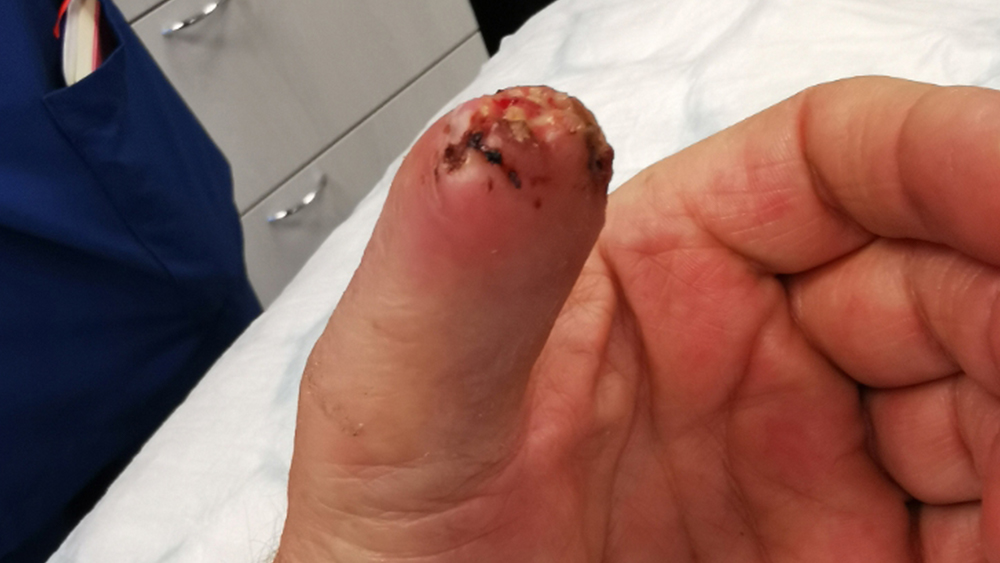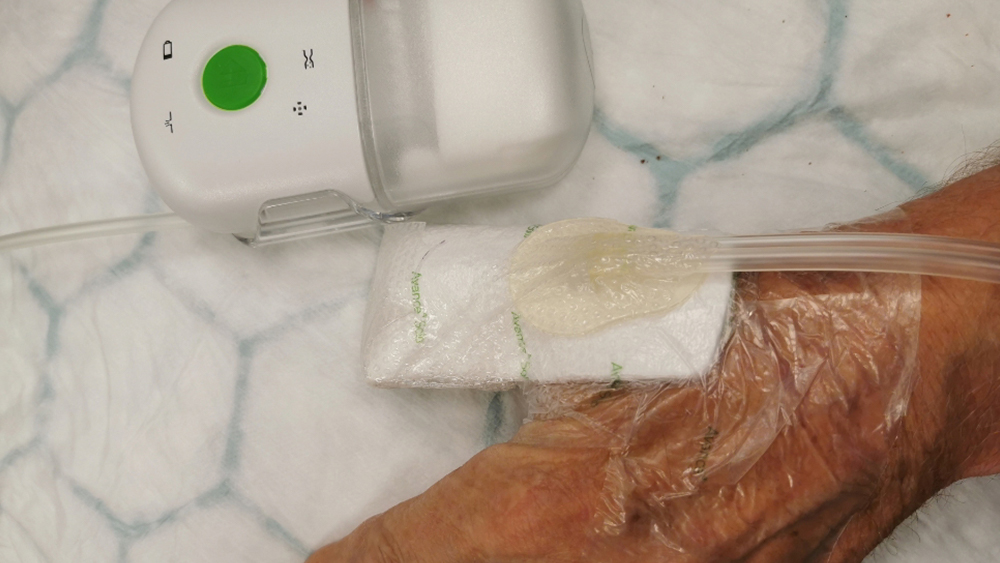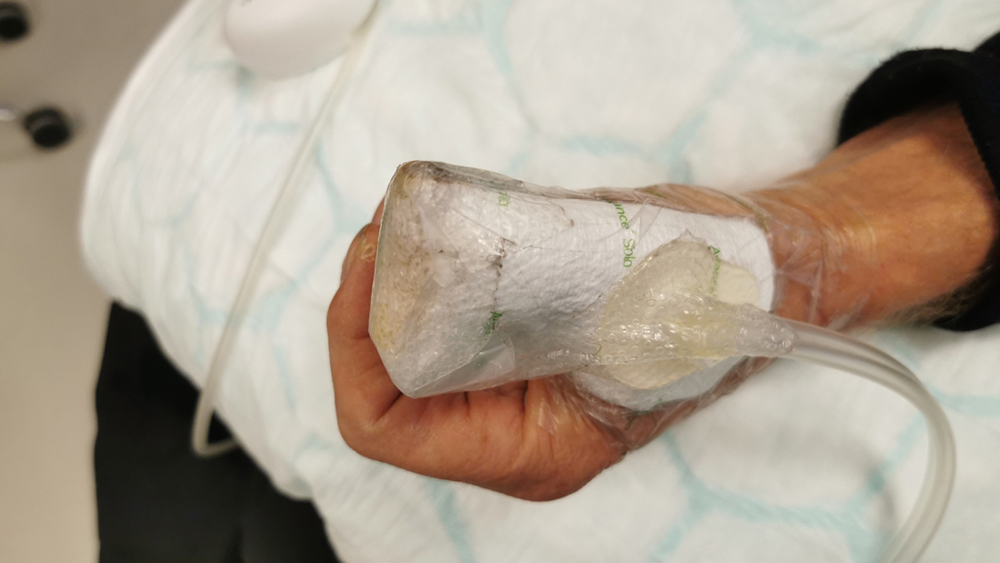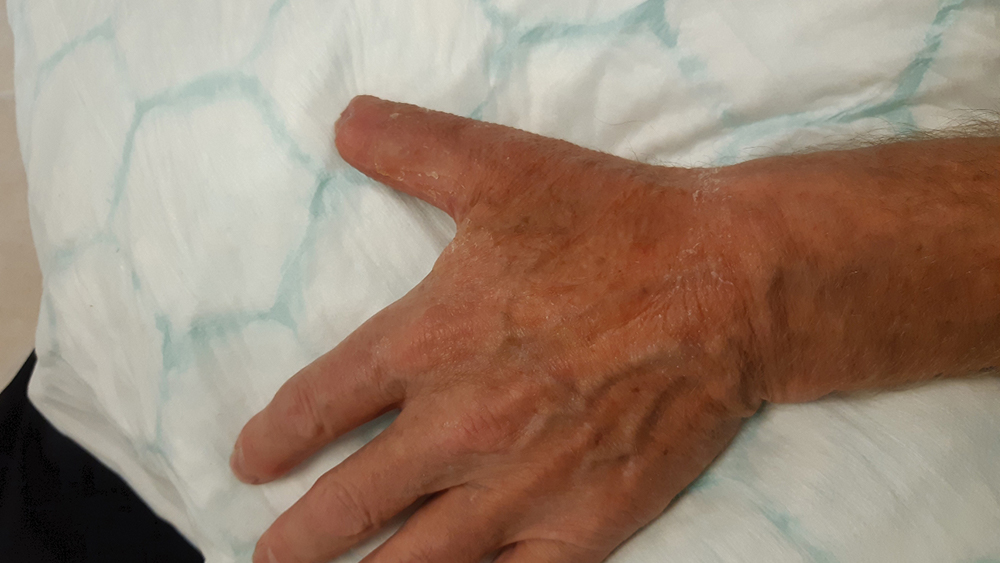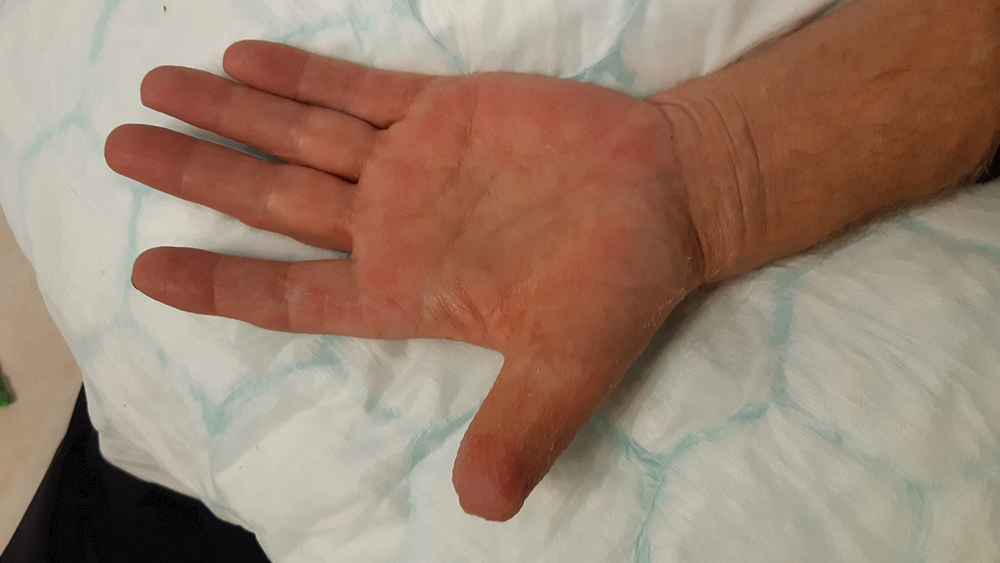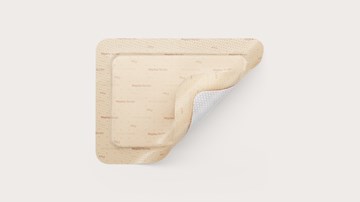Case Study: Trauma Thumb
The Avance Solo Negative Pressure Wound Therapy System is indicated for patients who would benefit from wound management via the application of negative pressure, particularly as the device may promote wound healing through the removal of exudate, infectious material.
Photographs and case notes kindly supplied by: Sanna Kouhia, Vascular Surgeon; Tuula Eskelinen, Wound Care Nurse; Arja Korhonen, Wound Care Nurse, the surgery outpatient clinic / wound outpatient clinic, Kainuu Central Hospital, Kajaani, Finland
Wound history
A 64-year-old male, with no comorbidities or current medications, presented with trauma wound on left hand thumb acquired after an accident caused by a circular saw. The wound included bone revealing injury and the fingertip had been amputated off.
Initially, 7 days before baseline, the wound and the surrounding skin were cleansed with Microdacyn hydrogel to remove black old blood. The treatment product is a silver dressing with Safetac surface Mepilex Transfer Ag, fastening with self-adhesive gauze.
The following day, trauma surgery for fingertip shaping was performed and post-surgical dressings Mepitel, Mesorb and stretch bandage was applied immediately after surgery.
Antibiotic treatment Kefexin 500 mg x 3 was prescribed to prevent wound infection.
Treatment regime
When the patient came to the wound clinic as planned for control and suture removal at day 6 after the surgery, a portable negative pressure wound therapy system was applied successfully and used until the wound was fully healed.
Dressing changes was done at each follow up visit (4 times) and 3 pumps and 6 dressings were used in total. Sharp debridement was performed at all visits except visit 4 and the final visit.
At the last visit, the NPWT system was discontinued and the occupational therapist provided the patient with a silicone sheath to protect his thumb as the only further treatment.
No antibiotics was administered after the portable NPWT was implemented.
Outcome
Review at the baseline visit found no necrotic tissue. A majority of the wound was granulated (70%), with slough present (20%) and 10 % of the wound had epithelialised.
7 days after starting the treatment with the portable NPWT, 20% of the wound had epithelialized and 80 % was granulated. No slough or necrotic tissue present.
The wound area decreased from 1 cm x 2 cm at baseline visit to 0,1 cm x 0,3 cm at visit 4 .
19 Days after the accident (Last follow up visit), 90% of the wound had epithelialised.
As the healing had progressed faster than expected and the thumb was forming satisfactory , the planned follow up surgery was not needed.
There was no clinical signs of infection during the treatment period. The surrounding skin appeared continuously healthy throughout. Canister fluid was clear and non-viscous and the exudation levels were low throughout the treatment period.
The patient reported no pain before or during the dressing changes.
Performance
Despite the difficult area to dress, the dressing was applied with full seal and no alarms were set off during the duration of treatment. Furthermore there were no additional dressing changes between visits.
Patient experience
The patient was satisfied with the treatment throughout the treatment period, feeling it was easy to understand and handle and no experience of pain.
Product evaluation
In general the clinician perceived the device overall as very good. Both the size and the conformability of the dressing was specifically noted.